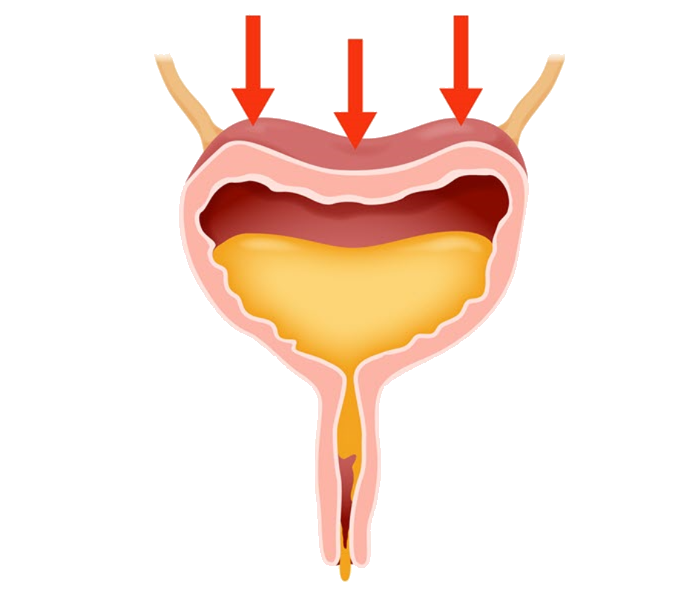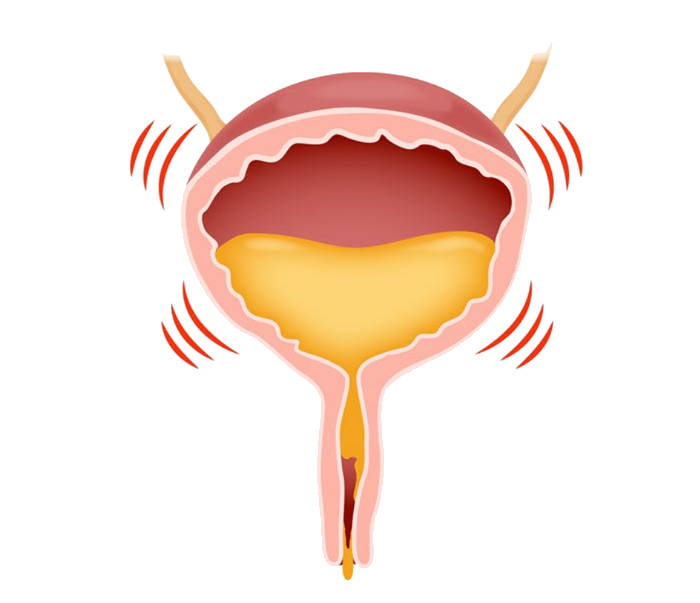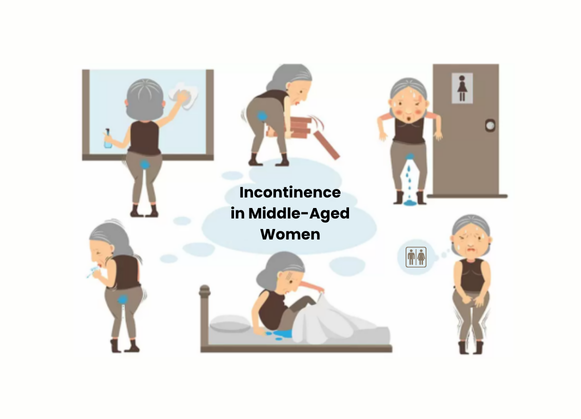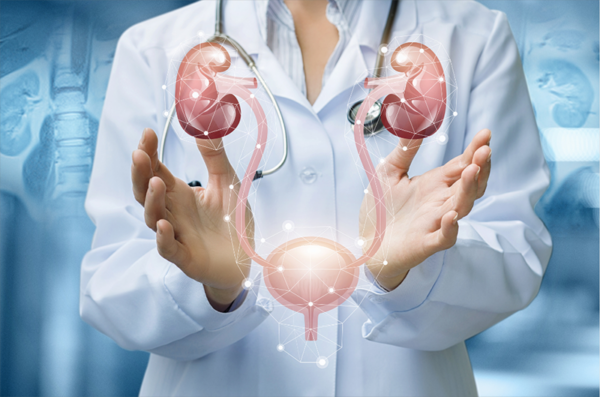Incontinence Treatment in Korea
Causes, Prevention and Treatment of Incontinence; The Silent Struggle of Middle-Aged Women.
Why You Need Treatment for Incontinence
Urinary incontinence, which affects approximately 40% of women, is a condition in which urine leaks from the bladder regardless of one’s will, and occurs more frequently in middle-aged women than in men.
At first glance, urinary incontinence is easy to think of as a simple condition, and you may wonder, “Do I really need to get treatment ?” However, urinary incontinence can cause anxiety and excessive stress due to the uncertainty of when and how urine will leak, which can cause great inconvenience in daily life.
Since incontinence is a treatable condition, it is important to receive appropriate treatment with the help of medical staff, as it can cause significant discomfort and impact on quality of life if left untreated, or disregarded as a natural phenomenon of aging.
- Accurate diagnosis and treatment: Determining the type of incontinence (stress, urgency, etc.) and its cause is important for an appropriate treatment plan.
- Identifying potential risks: Other health problems associated with incontinence (cystitis, enlarged prostate) can be identified and treated. In rare cases, incontinence can be a sign of spinal cord disease.
- Improved quality of life: Urinary incontinence can cause embarrassment, inconvenience in daily activities, and even reduce self-esteem, so proper treatment can greatly improve your quality of life.
- Helps prevent complications: Especially in cases of urge incontinence due to neurological disorders, if left untreated, it can lead to serious complications such as increased bladder pressure, kidney inflammation, and kidney failure.
- Personalized treatment: We can suggest the most appropriate treatment method according to the patient’s condition, medical history, lifestyle habits, etc.
- The good news about early diagnosis: The earlier you treat incontinence, the better the outcome.
- Additional Benefits: Identify and treat other health problems associated with incontinence, such as cystitis or an enlarged prostate.
Types of Incontinence

Stress Urinary Incontinence
This is a condition in which urine leaks due to sudden abdominal strain caused by coughing or sneezing. It often occurs in men after prostate surgery, and in women after pregnancy, childbirth, or menopause.

Urge Incontinence
A condition where an individual wakes up during the night to urinate, or experiences involuntary leakage on the way to the bathroom, even when the bladder is not completely full.

Overflow Incontinence
A condition in which urination is delayed due to problems with urinary function, or the bladder cannot be emptied completely due to insufficient urinary pressure, and overflows when filled again.

How to Self-Diagnose Incontinence
- When I cough or sneeze, urine leaks out.
- I feel pain in my lower abdomen when I urinate.
- My stomach hurts when I urinate.
- On the way to the bathroom, I couldn’t hold it and urine leaked out.
- I urinate more than twice during the night.
- I don’t feel refreshed even after urinating.
- I have leaked urine during intercourse.
Restore your self-esteem with personalized incontinence treatment
Symptoms of Urinary Incontinence in Middle-Aged Women

Short urethra compared to men 
Increased abdominal pressure 
Pregnancy and childbirth effects 
Drugs and stress 
Prenatal abnormality 
Pelvic muscle relaxation due to aging 
Menopause and Hormonal Changes 
Eating foods that irritate the bladder
How to treat urinary incontinence
After consulting with a doctor, the treatment method will be decided after considering the type and severity of incontinence, the patient’s condition, etc.
In the case of mixed urinary incontinence, surgical treatment for stress urinary incontinence and drug treatment for urge urinary incontinence can be undertaken simultaneously.

▪️ Midurethral sling surgery : A treatment method that mainly treats stress urinary incontinence in women by supporting the urethra with artificial tape.
▪️ Botulinum toxin injection : A surgery that injects botulinum toxin into the bladder to suppress excessive contraction of the urinary muscles, used for urge urinary incontinence.
▪️ Sacral nerve adjustment : A treatment that stimulates the sacral nerves connected to the anus and rectum to relieve tension in the bladder and pelvic muscles and control urination.
▪️ Bladder volume augmentation : A treatment that improves urination function by increasing the volume of the bladder that stores urine.
▪️ Artificial urethral sphincter implantation : A treatment used for urinary incontinence after prostate surgery in men, effective for patients who have difficulty controlling urination.
▪️ Pelvic floor muscle exercise (Kegel exercise) : This is an exercise that helps treat urinary incontinence by strengthening the sphincter muscles. Repeat each movement 10 times, 8 to 10 times a day.
▪️ Biofeedback : How to exercise while visually checking the monitor that detects the contraction of the pelvic floor muscles
▪️ Electrical stimulation therapy : Stimulates the pelvic floor muscles with a weak electric current to improve urinary control by strengthening and contracting the muscles.
▪️ Extracorporeal magnetic field therapy : Improves urinary function by stimulating muscles and nerves with magnetic fields.
▪️ Behavioral therapy : Train your bladder by controlling water intake, and collecting and holding urine.
▪️ Drug treatment : Anticholinergics or beta-3 receptor agonists are used for urge incontinence. There are currently no drugs that can fundamentally treat female incontinence.
Kegel Exercises to Help With Incontinence
Kegel exercise is a method of exercising the pelvic floor muscles that was first developed by American gynecologist Arnold Kegel. It was developed to treat urinary incontinence in women by strengthening pelvic muscles that have become loose due to childbirth or aging, and is called “pelvic floor muscle exercise” in the medical world.
Kegel exercises have become widely known as an exercise to improve sexual function as it has been found to be effective not only in urinary incontinence but also in promoting sexual pleasure. Our muscles become weaker day by day, and as muscles become weaker, our body’s ability to contract and relax gradually deteriorates, so doing Kegel exercises every day is a great help in preventing urinary incontinence.
- For maximum results, it is best to do this daily, morning and evening.
- It is recommended to repeat each movement 10 times, 8 to 10 times a day.
- Kegel exercises may seem boring at first, but with practice, you will be able to do them easily in a short period of time.
Frequently Asked Questions
What is urinary incontinence?
Urinary incontinence is a condition where urine leaks from the bladder involuntarily, affecting approximately 40% of women. It can cause significant disruptions to daily life and may lead to feelings of anxiety and stress.
What are the common types of urinary incontinence?
The common types include:
- Stress Incontinence: Urine leaks due to sudden abdominal pressure from actions like coughing or sneezing.
- Urge Incontinence: A sudden, intense urge to urinate, often leading to leakage before reaching the bathroom.
- Overflow Incontinence: Inability to completely empty the bladder, causing frequent or constant dribbling of urine.
What causes urinary incontinence in middle-aged women?
Causes include:
- Shorter urethra compared to men
- Elevated abdominal pressure
- Effects of pregnancy and childbirth
- Medications and stress
- Congenital defects
- Pelvic muscle relaxation due to aging
- Menopause and hormonal changes
- Consumption of bladder-irritating foods
How is urinary incontinence treated?
Treatment options include:
- Surgical Treatments:
- Midurethral sling surgery
- Botulinum toxin injections
- Sacral nerve modulation
- Bladder volume augmentation
- Artificial urethral sphincter insertion
- Non-Surgical Treatments:
- Pelvic floor exercises (Kegel exercises)
- Biofeedback
- Electrostimulation therapy
- Extracorporeal magnetic innervation
- Behavioral therapy
- Medication treatment
How can I self-test for urinary incontinence?
You might consider a self-test if you experience:
- Urine leakage when coughing or sneezing
- Pain in the lower abdomen during urination
- Inability to hold urine on the way to the bathroom
- Urinating more than twice a night
- Feeling of incomplete bladder emptying
- Urine leakage during sexual intercourse
